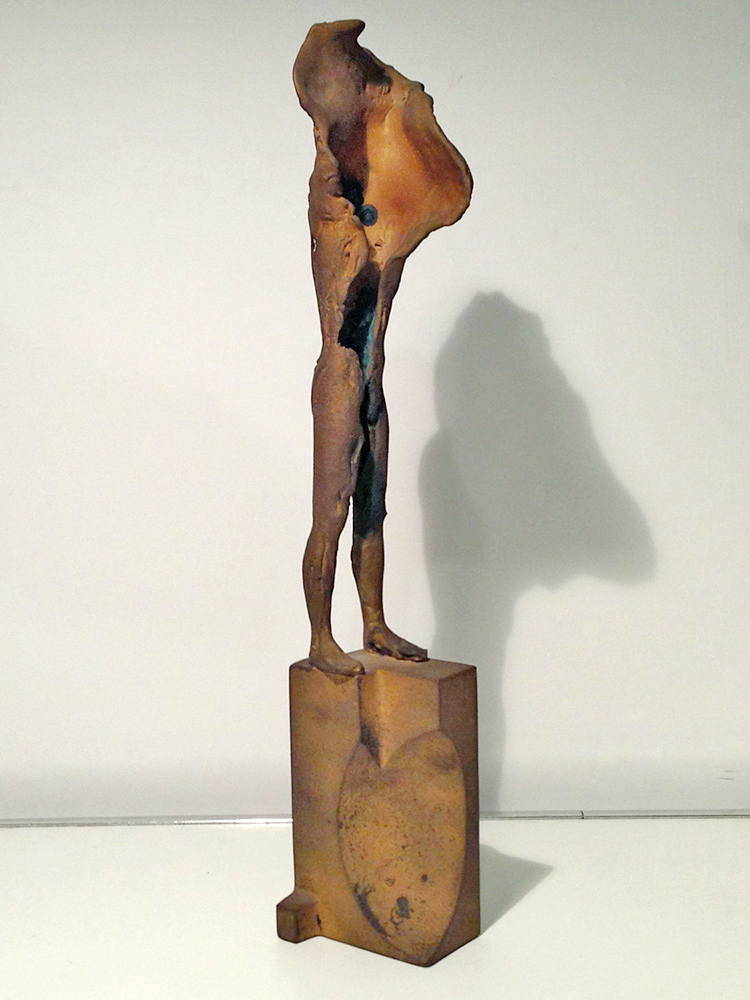Shows
The Human Body: Measure and Norms


One of the ways we learn to think is by differentiating—a cat from a dog, black from white, humans from chimps, morality from immorality. “The Human Body: Measure and Norms,” the latest group exhibition at Hong Kong’s Blindspot Gallery, which features works of seven local artists, is French curator Caroline Ha Thuc’s attempt to articulate the duality that exists within the human body—its limitations and potential.
To set the tone of the exhibition, Ha Thuc begins her curatorial statement with a quote from philosopher Michel Foucault’s The Utopian Body (1966) that reads, “[m]y body: it is the place without recourse to which I am condemned.” Ha Thuc confronts viewers with this objective truth that one’s knowledge and experience is, in reality, limited by the body. Upon arriving at the entrance of the gallery, visitors are encouraged to participate in the exhibition by putting on white laboratory coats, all of which are average size for men and women by Hong Kong standards. Whether fitting or not, one immediately becomes aware of the human body as the ultimate reference from which to define oneself and others—“the point zero of the world” as Foucault calls it.
The exhibition begins with multimedia artist Issac Chong Wai’s “Equilibrium,” a series of performances accompanied by video, photography and paper documentation. Attached to the wall is one end of Equilibrium No.8 – Boundaries (2012), a large-sized paper covered in black charcoal marks resembling pairs of lungs, while the rest of the sheet lies on the gallery’s industrial, concrete floor, captivating the viewers with its three-dimensional presence. Showing beside this piece is a single-channel video that reveals the marks on Boundaries as documentation of a past performance, where participants were asked to mark on paper the shape of their own bodies using charcoal, and to draw within their reach. These body extensions thus generate traces that exquisitely reflect traces of social human behavior. In the process of creating boundaries (of the body), overlapping drawings that emerge, in turn, symbolize shared spaces and collaborative interactions in the society. With a simple design, Chong, currently an MFA student at the Bauhaus-Universität in Weimar, Germany, skilfully communicates his insightful concepts through a dynamic, elegant form.

Walking towards the gallery’s large, hexagon-shaped window that overlooks the industrial buildings in the Wong Chuk Hang district, works of renowned Hong Kong sculptor Antonio Mak (1951–1994) are displayed on the left of the corridor. The small-scale, figurative cast-bronze sculpture Untitled (Covering) (1993) is a distorted human figure with an open-ended upper body that is seemingly merging with the air. Mak’s visually evocative and meticulously crafted sculptures were created with the lost-wax method, in which his subjects—human torsos, horses and tigers—were first crafted in wax and then in bronze. Having studied painting and sculpture in London during the 1970s, at Goldsmith’s College and the Slade School of Art, University of London, Mak’s works are stylistically Western yet integrally Chinese, and ones that make a deep and enduring impression on the viewers.
Exhibited alongside Covering, are seven drawings by Mak that seem to have been made as sketches for future sculptures. Each comprises enigmatic, surreal imagery that merge two separate, incompatible elements—objects and man, or man and a different man. In the watercolor on paper, Untitled (Staircase on Man) (c. 1975–90), the image of a staircase is blended into a solitary, seated human figure in a strange yet beautiful manner, creating an entry point for one’s imagination. One of the characteristics of Mak’s art is the persistence of his engagement with certain motifs over a period of time. These drawings by the artist attentively divulge his fascination with the relationship between the human body and man-made objects, such as books, flights of stairs and chairs.


Bringing the viewers into a more tranquil space, the concluding display across the exhibition space is a Zen-like garden by multimedia artist Ho Siu Kee, which is complemented by his single-channel video Aureola No. 15 – Chanting in the Grotto (2015), projected on a large wall. The two-and-a-half-minute video begins with the imagery of a blazing sun, before showing Ho performing a method of meditation that he invented, which involves wearing a round-shaped headgear weighted down by a heavy rock. For Ho, the headgear not only symbolizes the aureola—the radiance of a luminous cloud often depicted around sacred figures in spiritual paintings—but is also a reference to metal devices used for historical methods of torture and punishment. While suggesting a tangible awareness of the limitations of the body, Ho goes beyond and points to the intangible potential of attaining liberation through spiritual means, echoing curator Ha Thuc’s quest for “freeing the human body” from its limitations.
“The Human Body: Measure and Norms” is on view at Blindspot Gallery, Hong Kong, until February 6, 2016.







